Control Who can Email a Channel in Microsoft Teams
 One of the great things about Microsoft Teams is how the platform supports a number of different collaboration and communication styles within your organization. Instead of dictating how a project team or a business unit must collaborate, Teams provides flexibility to support chat or conversation-based collaboration, document-based collaboration, or email-based collaboration. Back in 2017 and 2018, I presented on this topic several times (Finding the Right Cultural Fit for Collaboration), providing several scenarios that highlighted different working styles.
One of the great things about Microsoft Teams is how the platform supports a number of different collaboration and communication styles within your organization. Instead of dictating how a project team or a business unit must collaborate, Teams provides flexibility to support chat or conversation-based collaboration, document-based collaboration, or email-based collaboration. Back in 2017 and 2018, I presented on this topic several times (Finding the Right Cultural Fit for Collaboration), providing several scenarios that highlighted different working styles.
Personally, I don’t see chat tools ever completely displacing email, but this category of technology has certainly reduced the volume of email that the typical information worker receives. Microsoft gets this, and is continuing to provide new innovations to further integrate Teams with other key workloads such as Outlook. Yes, that’s right, users have the ability to collaborate within a Channel via email. For this tip, I’ll show you how it works, as well as how to control who can email a channel.
This tip was originally shared as part of the November 2019 Productivity Tips webinar or out on the CollabTalk YouTube channel. You can jump to this specific tip in the video by clicking here.
Email a Channel in Teams
To get started, go into your Team, highlight the target channel in the left nav, and click on the ellipses. Within the dialog box, select Get Email Address.
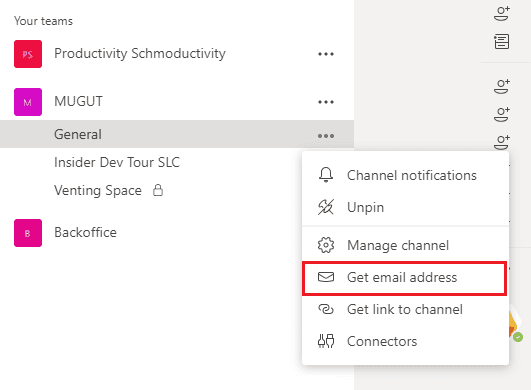
A dialog box opens automatically, with the email address for the channel already highlighted. Simply click Copy, and paste the link into an outgoing email to share with the channel.
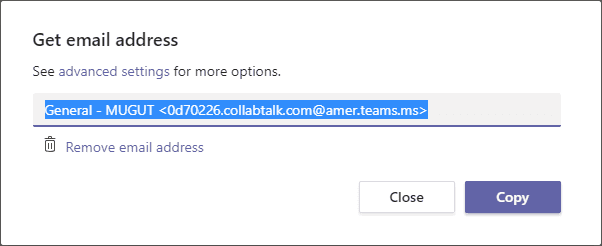
You’ll also notice that you have the ability to Remove Email Address. If selected, the dialog box asks you to confirm. If confirmed, this does not remove the ability to email a channel, but instead it deletes the current email address — forcing users to go back into the channel and re-copy the email address. You might clear out an email address if you find that people are abusing the feature, but rather than lock down the ability to email, you want to recreate the email and share it out with a limited set of users. I walk through additional governance options below.
Once an email is received by the channel, the body of the message appears within the threaded conversation.

You can expand and view the entire email, or click View Original Email to open the original email file in its native format.

Once open in its original form, you can reply, forward, or store a copy within Outlook.
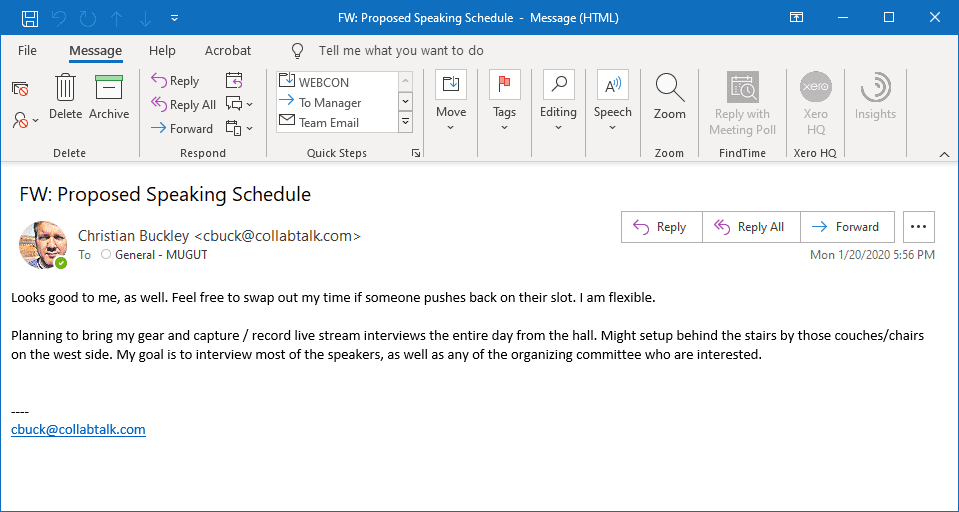
Control who can email a Channel
For some organizations, you may want to control access – restricting email to a channel to members of that Team, or to specific domains, thus limiting the capability for external users.
To manage the ability to email a Channel, once again go into the targeted Team and Channel, and right click or select the Channel ellipses > Get email address
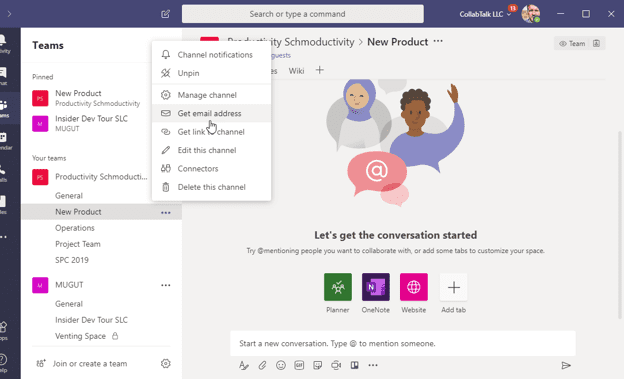
To control who can email the channel, select Advanced Settings
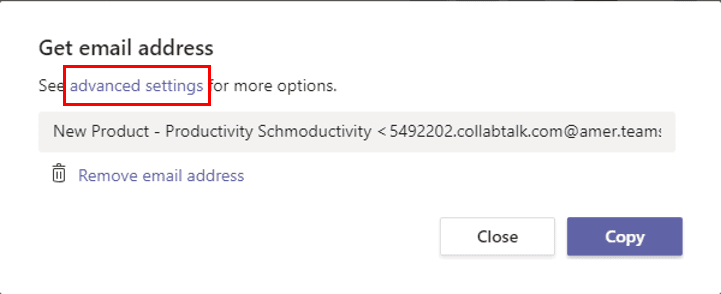
Within the expanded view, select the appropriate control and click Save. By default, anyone with the email address can send email to the channel. You’ll probably want to restrict email access to members of the team, or even define email to specific domains — which is a great tip when working with external users.
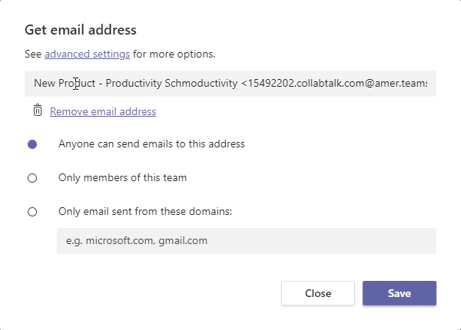
Of course, admins can elect to shut off *all* email access to the Team, either as part of the Team provisioning process, or through the Teams admin console in the Office 365 admin center.




